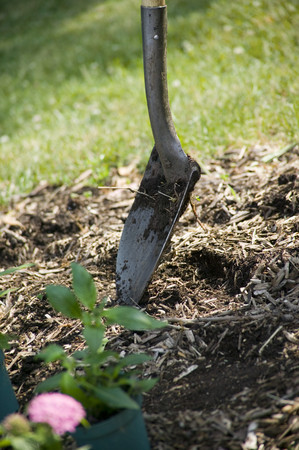Baby, it’s cold outside

Being we live in the Las Vegas Valley and it is in the middle of the desert, odds are these mild temperatures won’t last for too much longer and our winter nights will be cold, if not frigid.
The arctic chill, however, doesn’t have to play havoc on our gardens and landscapes. With a few precautions, plants can survive the winter and return to bloom again in the spring.
“You really need to watch the weather carefully,” said Jim Johnson, a horticulturist at Star Nursery. “Generally speaking, the best thing to do is watch the weather forecast for freezing or below. If you have native plants or desert plants, they have adapted to this and there is very little to be done. If you have tropicals or subtropicals, such as hibiscus, then you have to take care to protect them from freezing temperatures.”
Johnson said area residents need to consider the wind chill factor when determining the low temperature.
The best method to keep the plant warm — aside from moving it indoors if it is potted — is to surround the base and crown of the plant with 3-4 inches of organic mulch, such as bark.
“A really good idea is just to mulch,” said Angela O’Callaghan, social horticulture specialist at the University of Nevada Cooperative Extension. “Cover the soil so there is not going to be a lot of chill getting to those plant roots.”
In addition to keeping the plant roots warm, organic mulch provides much-needed nutrients for the soil and holds water.
O’Callaghan said roses, photinias and euonymus really appreciate the fresh mulch.
Another way to keep the plants from getting too cold is to wrap them. “Wrap the growing point,” she said.
And it’s especially important to know where the growing point is on each plant. The growing point of palms, for example, is not at the very top. “It’s a few inches down,” O’Callaghan said. “Of course this gets tricky with big, 20-foot tall trees.”
She said plants can be wrapped in any type of breathable material. Burlap is especially good for this. “You can buy palm parkas, but they’re not a whole lot better than just using burlap.”
Johnson said even a cardboard box will do. Just be sure to weigh it down so that it doesn’t blow off.
Area gardening expert Linn Mills said he once heard of a woman who wrapped her citrus trees with icicle lights and then when it got cold she turned the lights on and covered the trees with blankets to create heat.
Mills said it’s important not to use plastic when wrapping trees and plants. With plastic wraps, the temperature radiates out, he said, adding that it’s usually colder under the plastic than outside of it.
“It’s exactly the opposite of summer.”
When it comes to irrigating plants during the winter, less is more, Mills said. However, plants need to be well-watered before the cold sets in.
“A well-watered plant is more resistant to the cold than a water-stressed plant. Like people, if they’re healthy, they’re more resistant.”
“Unless you have a very high water use plant, most of the time plants only need a little water,” O’Callaghan said.
Once a week is usually enough, but the best way to determine if a plant needs to be watered is to feel the soil. Go down to about an inch or so and if the soil feels moist, the plant doesn’t need to be watered. If it feels dry at an inch, it needs to be watered, she said.
A big exception to this is cacti and succulent plants. Johnson said these types of plants retain water in their pads and stems. “If it’s too cold and they freeze, they will actually explode. From Thanksgiving to Valentine’s Day, don’t water cactus.”
Mills said area residents should be careful not to overspray the plants or get water on the sidewalks, as it can freeze and become slippery and dangerous to walk on.
He said it’s also important to be sure the irrigation pipes don’t freeze. Any exposed pipes should be wrapped to protect them from the cold, especially in the front of the house where the main water line comes in. Be sure to protect the anti-siphon valve as well.
“The way I do mine is I just wrap them with old blankets and put a 5-gallon bucket over it.”
Johnson said tubular pipe insulation is available as are valve covers that look like fake rocks.
“If it really gets cold, don’t forget about water softening devices in the garage,” he said.
All three said plants should not be pruned or fertilized during the winter. Home gardeners should do everything they can to discourage new, tender growth, which is most susceptible to cold weather and freezing temperatures.
“If you have plants that show some foliar damage or the leaves are burned, don’t be concerned until spring when you see new growth. Everything going on in the winter protects the plant,” Johnson said.
Although winter is not the best time to tend a garden, O’Callaghan said it is an ideal time to prepare for spring. She said to use leftover garden prunings or vegetable garden remnants to start a compost pile.